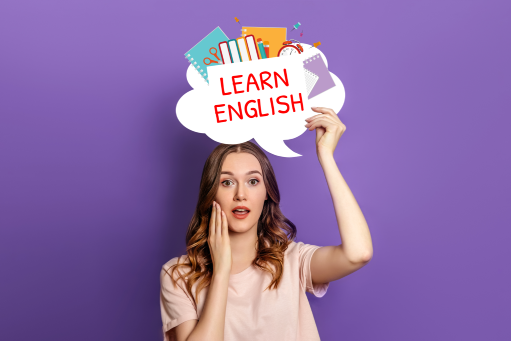Imagine this: you’ve spent months preparing; your test date finally arrives and you’re sitting face to face with the IELTS examiner. Your heart pounds. Your palms sweat. You know your English is decent, but suddenly, your tongue feels tied.
This moment is where countless students falter, not because they lack skill, but because they make avoidable mistakes. The IELTS Speaking test is less about perfection and more about communication. And yet, far too many candidates walk in with misconceptions, poorly rehearsed answers or confidence that’s crumbling. Resources like the IELTS English Speaking Course can make all the difference, equipping you with the structure, feedback and confidence needed to speak clearly and naturally in pressured situations.
Let’s walk through the most common pitfalls students encounter during the IELTS Speaking test and how you can avoid them. If you’re serious about success, it’s time to learn from those who stumbled so you don’t have to.
Table Of Contents
- Mistake #1: Memorising Answers
- Mistake #2: Speaking Too Fast or Too Slow
- Mistake #3: Neglecting Grammar
- Mistake #4: Ignoring Pronunciation and Intonation
- Mistake #5: Overusing Complex Vocabulary
- Mistake #6: Giving Short or Irrelevant Answers
- Mistake #7: Misunderstanding the Cue Card in Part 2
- How the Right Support Can Make the Difference
- Conclusion
- FAQs
Mistake #1: Memorising Answers
Many students think that having a pre-prepared answer will ease the stress. Ironically, this often backfires. Examiners are trained to spot memorised content and will mark you down for it. It’s fine to rehearse ideas, but parroting full sentences doesn’t reflect real communication skills. Not only does it sound unnatural, but it also prevents you from responding to follow-up questions effectively, which is a crucial part of the test.
Memorised answers tend to be rigid, lack personality and often fail to match the exact question being asked. Instead of showcasing your true ability, you risk sounding robotic or even irrelevant. This significantly affects your scores in fluency, coherence and lexical resource.
An effective IELTS English Speaking Course can help students understand how to build natural responses rather than scripted ones, focusing on spontaneity and fluidity. Through guided practice, role plays and feedback, such courses teach you how to think in English, develop your vocabulary and express your opinions clearly, even when you’re nervous. You’ll learn how to structure answers on the spot, use fillers and linking phrases naturally and stay calm under pressure, all of which are key to succeeding in the IELTS Speaking test.
Mistake #2: Speaking Too Fast or Too Slow
Some candidates believe that speed equals fluency, while others speak slowly out of fear of making mistakes. Both approaches can hinder communication. Speaking too fast can make your speech unclear and difficult to follow, especially if your pronunciation suffers as a result. On the other hand, speaking too slowly may signal hesitation, lack of vocabulary or low confidence, factors that can negatively impact your fluency and coherence score.
Striking the right balance is key. You should aim for a natural conversational pace that allows you to pronounce words clearly, use intonation effectively and organise your thoughts smoothly.
Practising with authentic IELTS material, especially recorded speaking samples and examiner feedback, can help you gauge the right pace and rhythm. You’ll also find some helpful Blogs like Top 10 Online English-speaking Courses in India, which offer curated content focused on real-time interaction. These courses often include live practice sessions, peer speaking groups and timed responses, essential tools for developing the confidence and pacing you need to perform well in the actual test.
Mistake #3: Neglecting Grammar
Even fluent speakers lose marks when their grammar is inconsistent. From subject-verb agreement to tense usage, grammar plays a huge role in clarity.
Don’t let grammar mistakes drag down your score. Improve your control of English structures with the help of Oops Study’s blog on How To Improve Your English Grammar For IELTS. It offers practical exercises and targeted advice tailored for IELTS candidates.
Mistake #4: Ignoring Pronunciation and Intonation
Clear pronunciation doesn’t mean sounding like a native speaker; it means being easily understood. This is a key component of the IELTS Speaking test, yet many students overlook it. They focus solely on grammar and vocabulary, ignoring the importance of how they sound.
Intonation, the rise and fall of your voice, adds meaning, emotion and structure to your speech. A flat, monotonous tone can make you sound robotic or disinterested, while inconsistent or exaggerated stress patterns may confuse the listener. Misplaced intonation can even change the meaning of a sentence entirely.
Courses focused on speaking, such as those offered by Oops Study, train learners on rhythm, stress and intonation patterns. These nuances are key if you want to sound natural, confident and engaging during the test. Includes targeted pronunciation drills, accent neutralisation tips and intonation exercises designed specifically for Indian learners preparing for the IELTS. These lessons ensure that your message is not only grammatically correct but also pleasant and clear to the examiner’s ear.
Mistake #5: Overusing Complex Vocabulary
Yes, vocabulary is one of the criteria on which you’re assessed in the IELTS Speaking test. However, trying to impress the examiner by cramming in long, obscure or academic words, especially without full understanding, can actually hurt your score. Misusing advanced vocabulary leads to awkward phrasing, unclear meaning and sometimes even incorrect answers.
Examiners are not looking for the “biggest” words; they’re looking for precise, natural and appropriate use of language. It’s far more impressive to use everyday words correctly and fluently than to force complex terms into the conversation unnaturally.
The trick is to use IELTS material that teaches contextual vocabulary rather than random word lists. Practice with phrases and expressions that real people use in real conversations, especially about common IELTS topics like work, study, travel or daily routines.
If you struggle with this, consider revisiting Blogs which provide vocabulary-in-context tips that are directly aligned with exam needs. This resource not only helps you build a strong vocabulary base but also shows you how to apply it correctly, making your speaking responses smoother, clearer and much more effective.
Mistake #6: Giving Short or Irrelevant Answers
“Yes” or “No” won’t cut it. The IELTS Speaking test is a conversation, not an interrogation. The examiner wants to see how well you can express and expand on ideas.
For instance, when asked, “Do you enjoy travelling?”, don’t just say, “Yes, I do.” Instead, explain why: “Yes, I enjoy travelling because it allows me to explore new cultures, cuisines and ways of life.”
A well-structured IELTS English speaking course will train you to develop your answers thoughtfully. Look for programmes that focus on conversational expansion and coherence.
Mistake #7: Misunderstanding the Cue Card in Part 2
Part 2 of the speaking test, the long turn, often throws students off. Some go off-topic; others don’t speak for the full two minutes. It’s crucial to structure your answer using the bullet points provided.
Practising with real IELTS material from trusted sources helps you understand what’s expected. The structured techniques taught in various courses guide you on how to stay relevant, develop your points and manage time effectively.
How the Right Support Can Make the Difference
Whether you’re a first-time candidate or aiming to improve your band score, choosing the right support system is vital. High-quality IELTS material, structured feedback and expert mentoring form the holy trinity of IELTS success.
Oops Study, a pioneer in digital IELTS prep, offers meticulously designed lessons and live classes that cover all aspects of the exam. Their IELTS English Speaking Course focuses on real-time practice, vocabulary in context, pronunciation drills and examiner-style feedback, everything you need to gain confidence and fluency.
In addition to Oops Study, several other reputable platforms also provide top-tier IELTS preparation:
- British Council – Offers official IELTS prep courses, practice materials and speaking workshops led by certified trainers.
- IDP IELTS – Known for up-to-date resources, practice tests and personalised preparation tools.
- Magoosh – Provides a flexible online IELTS course with video lessons, vocabulary builders and practice questions.
- IELTS Buddy – A platform offering comprehensive IELTS practice resources, exam strategies, and speaking/writing tutorials for all proficiency levels.
Conclusion
Scoring high on the IELTS Speaking test isn’t just about knowing English; it’s about knowing how to use it under pressure. By avoiding these common mistakes and investing in the right preparation, you can enter the exam room with confidence.
Whether it’s improving your grammar, learning to expand your answers or mastering cue card technique, the right IELTS English speaking course and targeted IELTS material can make all the difference.
Don’t just prepare. Prepare smartly.
FAQs
1. What is a common mistake in IELTS Speaking?
Memorising answers. It makes your responses sound unnatural and limits flexibility.
2. What should I avoid in IELTS Speaking?
Avoid short, one-word answers, overusing complex words, and speaking too fast or too slow.
3. Is it bad to speak too slowly or too quickly?
Yes. Too fast affects clarity, too slow shows hesitation. Aim for a natural pace.
4. How important is pronunciation?
Very. Clear pronunciation helps the examiner understand you easily.
5. Should I use British or American English?
Either is acceptable. Just stay consistent throughout the test.
6. Is body language important in IELTS Speaking?
Not assessed, but using natural gestures can help you feel more confident.











